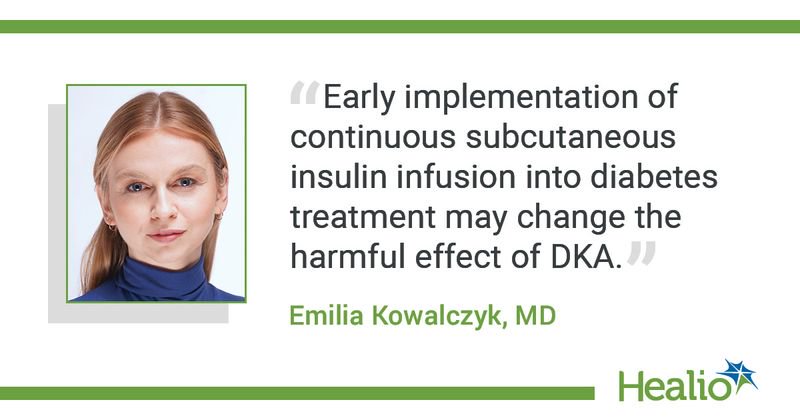DKA at diabetes diagnosis does not affect children’s long-term HbA1c
Click Here to Manage Email Alerts
Children with diabetic ketoacidosis at type 1 diabetes diagnosis did not have a significant difference in HbA1c at 5 years compared with those without DKA, according to study data.
“The presence of DKA at diabetes diagnosis is not associated with deteriorated long-term metabolic control in children using modern technologies like continuous subcutaneous insulin infusion,” Emilia Kowalczyk, MD, of the department of pediatric diabetology and pediatrics at the Pediatric Teaching Clinical Hospital of the Medical University of Warsaw, Poland, told Healio. “The early implementation of continuous subcutaneous insulin infusion into diabetes treatment may change the harmful effect of DKA and lead to a long-term HbA1c improvement.”

Researchers analyzed data from children diagnosed with type 1 diabetes with DKA at the onset of the disease at the Pediatric Teaching Clinical Hospital of the Medical University of Warsaw from 2010 to 2014. Participants were matched by age, sex and BMI with children diagnosed with type 1 diabetes and no presence of DKA. In both groups, 87% of participants used insulin pump therapy. All participants were followed for 5 years. Data were collected at diagnosis and every routine clinical visit for 5 years.
Among the 85 children with type 1 diabetes and DKA at diagnosis, 24% had severe DKA, 27% moderate DKA and 49% mild DKA. The DKA group had higher HbA1c at diabetes onset compared with the group without DKA (12.5% vs. 11.3%; P < .001). The DKA group had a sharp decline in HbA1c to 7.1% 1 year after diagnosis, with HbA1c remaining stable for the next 4 years. There was no significant difference in HbA1c between the DKA and non-DKA groups at any year during follow-up.
In a univariate linear regression model, use of an insulin pump was associated with a lower HbA1c at 5 years (beta = –1.46; 95% CI, –2.01 to –0.92; P < .001). DKA severity was not associated with a significant difference in fifth-year HbA1c. No differences were observed in metabolic control or daily insulin requirements between the two groups. There were also no differences in metabolic control by age or sex.
“Data concerning the influence of DKA on long-term metabolic control are incoherent, but most of them relate to a poor long-term prognosis if acidosis was present at diagnosis,” Kowalczyk said. “Surprisingly, we did not reveal this negative correlation. The insulin pump therapy was implemented at diabetes onset in our study, which was rare at that time. That is why we observed that early implementation of continuous subcutaneous insulin infusion might mitigate the negative consequences and all the burden of DKA at diabetes onset.”
Kowalczyk said future studies should analyze the effects of early continuous subcutaneous insulin infusion implementation versus late implementation on metabolic control in kids with type 1 diabetes and DKA.
For more information:
Emilia Kowalczyk, MD, can be reached at emilia.kowalczyk@uckwum.pl.

